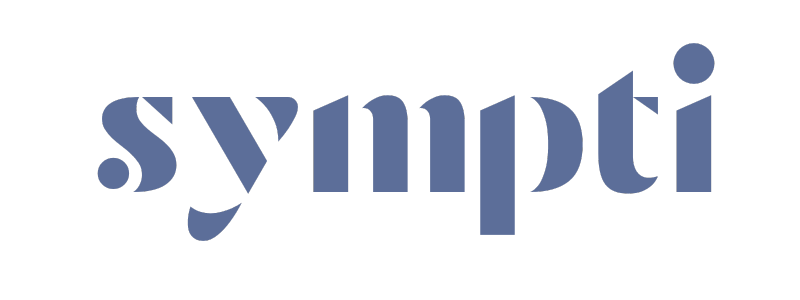The Healthcare Disconnect We All Feel
We’ve all been there. Sitting in a waiting room, filling out the same medical history form for the tenth time. Calling around to find your test results. Wondering if your specialist knows what your primary care doctor recommended. Healthcare often feels like navigating a maze with no map—fragmented, disconnected, and frustrating.
The good news? This is changing. Fast.
As healthcare technology evolves, we’re witnessing a powerful shift toward integration—platforms that connect all aspects of the healthcare journey for both patients and providers. At Sympti, we’re passionate about this transformation because we’ve seen how it changes lives.
Bridging the Gap Between Sick and Care
Healthcare fragmentation isn’t just annoying—it’s dangerous. When information doesn’t flow seamlessly between providers, crucial details fall through the cracks. Tests get duplicated. Treatments conflict. Time gets wasted. Most importantly, patients suffer.
Integrated healthcare platforms solve this fundamental problem by creating a continuous, connected experience across the entire healthcare ecosystem. They’re not just software; they’re the digital bridges connecting patients with the right care at the right time.

How Patients Win with Integrated Healthcare
1. Taking Control of Your Health Journey
Remember when you had to be your own health secretary—keeping track of appointments, managing prescriptions, and remembering every detail of your medical history? Integrated platforms put all this information at your fingertips.
With solutions like Sympti, patients can:
- Access their complete medical records anytime
- Book appointments with just a few clicks
- Receive reminders for medications and follow-ups
- Communicate directly with their care team
“The patient experience is transformed from passive recipient to active participant,” explains Dr. Maya Richardson, healthcare futurist. “When patients can see their entire health picture in one place, they become partners in their own care.”
2. Finding the Right Care, Right Away
When you’re sick, the last thing you need is uncertainty about where to go. Integrated platforms eliminate this stress by helping patients navigate to the most appropriate care setting based on their symptoms, insurance, and location.
For example, Sympti’s facility search function (https://sympti.com/facility/search) allows patients to find nearby care options and even book appointments directly. No more guessing whether you need urgent care, primary care, or the ER.
3. Building a Personal Health Narrative
Your health story is more than a collection of isolated episodes—it’s a continuous narrative. Integrated platforms maintain this narrative by preserving your complete health history, creating continuity even when you see different providers.
When every provider can access your comprehensive history, diagnoses become more accurate, treatment plans more personalized, and care more effective. Your health story remains intact, no matter where your healthcare journey takes you.
How Providers Elevate Their Practice
1. The Complete Patient Picture
For healthcare providers, fragmented information leads to fragmented care. Integrated platforms give clinicians what they’ve always needed: the full context of a patient’s health.
“When I can see a patient’s complete medical history, medication list, and recent test results all in one place, I make better decisions,” says Dr. James Martin, an urgent care physician. “It’s like going from seeing in black and white to seeing in color.”
This comprehensive view enables:
- More accurate diagnoses
- Fewer medical errors
- Better-coordinated care plans
- Reduced redundant testing
2. Working Smarter, Not Harder
Healthcare providers didn’t choose their profession to spend hours on administrative tasks. Yet many find themselves drowning in paperwork instead of focusing on patients.
Integrated platforms streamline workflows by automating routine tasks, simplifying documentation, and facilitating seamless communication between team members. The result? Providers can redirect their energy to what matters most: patient care.

3. Data-Driven Insights for Better Outcomes
When healthcare data exists in silos, valuable patterns remain hidden. Integrated platforms unlock these insights by aggregating data across populations, enabling providers to:
- Identify trends in patient outcomes
- Predict and prevent complications
- Implement evidence-based protocols
- Tailor treatments to specific patient demographics
As one healthcare administrator puts it, “We’re moving from reactive medicine to proactive health management. The data tells us not just what happened, but what might happen next—and how to prevent it.”
Real-World Impact: Integration in Action
Let’s look at how integrated healthcare actually works in practice:
Scenario 1: The Weekend Illness
Maria wakes up Saturday morning with symptoms that concern her. Instead of wondering where to go, she opens the Sympti app, enters her symptoms, and receives guidance on appropriate care options. She sees that RediClinic has availability in 30 minutes, books her spot, and arrives to find her information already in the system. The provider accesses her full history, makes an informed diagnosis, and sends the prescription electronically. Maria receives follow-up instructions through the same platform, completing a seamless care journey.
Scenario 2: The Complex Case
Robert has multiple chronic conditions managed by several specialists. Previously, coordinating his care required endless phone calls and faxes between offices. Now, with an integrated platform, his entire care team views the same comprehensive record. When his cardiologist adjusts a medication, his primary care physician and nephrologist are automatically notified. Treatment plans align, contradictions are avoided, and Robert receives truly coordinated care.
The Technology Behind the Transformation
What makes this integration possible? Several key technologies work together:
- Secure Cloud Infrastructure: Enabling safe, HIPAA-compliant data sharing across different settings
- API Integrations: Allowing different software systems to communicate and exchange information
- Advanced Analytics: Transforming raw health data into actionable insights
- User-Centered Design: Creating interfaces that work for both patients and busy clinicians
- Mobile Optimization: Delivering critical health information whenever and wherever it’s needed
The result is a healthcare ecosystem where information flows securely and appropriately across the entire continuum of care.

The Journey Ahead: What’s Next for Integrated Healthcare
While we’ve made tremendous progress, the evolution of integrated healthcare platforms continues. Here’s what’s on the horizon:
Predictive Health Management
Future platforms won’t just record what happened—they’ll predict what might happen next. By analyzing patterns across millions of patients, these systems will identify risk factors early, enabling intervention before problems escalate.
Seamless Device Integration
The integration won’t stop at clinical systems. Tomorrow’s platforms will incorporate data from wearables, home monitoring devices, and smart health tools, creating a comprehensive picture of health both inside and outside clinical settings.
AI-Assisted Decision Support
Artificial intelligence will increasingly support clinical decision-making, sifting through vast amounts of data to suggest optimal treatment pathways based on the latest evidence and similar patient outcomes.
Community Health Integration
The next frontier is connecting healthcare with social services, community resources, and public health initiatives—addressing the social determinants that influence 80% of health outcomes.
Joining the Healthcare Revolution
The shift to integrated healthcare isn’t just a technological evolution—it’s a fundamental reimagining of how healthcare works. At Sympti, we’re proud to be part of this transformation, creating connections that empower both patients and providers.
For patients, integrated platforms mean less confusion, more control, and better outcomes. For providers, they mean more complete information, streamlined workflows, and the ability to practice at the top of their license.
Healthcare has always been about connections—between providers and patients, between body systems, between treatments and outcomes. Technology is finally catching up, creating digital connections that mirror and strengthen these human ones.
The result? A healthcare system that feels less like a maze and more like a journey—with clear paths, supportive guides, and the information you need, when you need it.
Ready to experience the difference for yourself? Sign up for Sympti today and join the healthcare revolution.
This blog post was updated on May 27, 2025.



